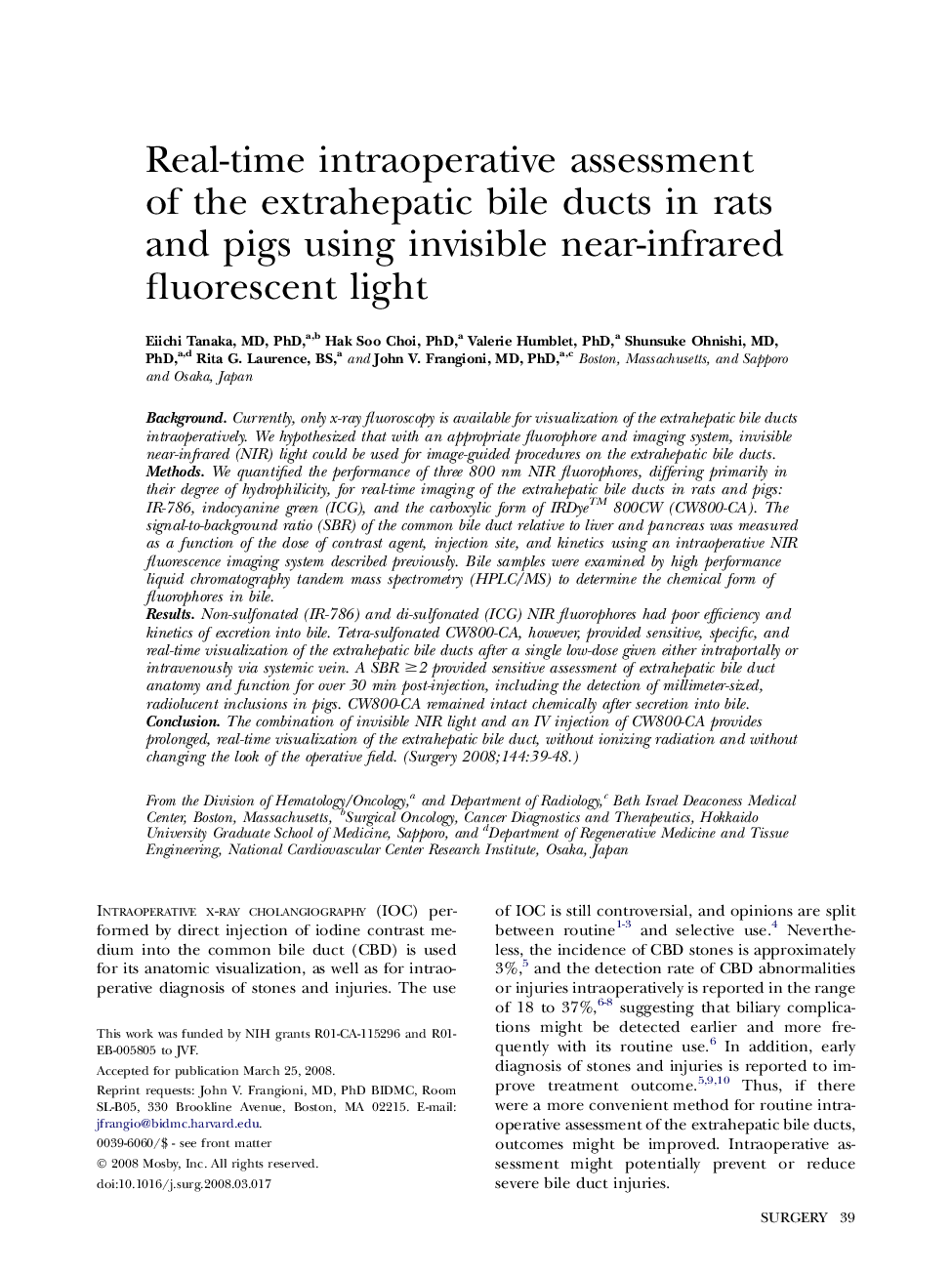| Article ID | Journal | Published Year | Pages | File Type |
|---|---|---|---|---|
| 4309758 | Surgery | 2008 | 10 Pages |
BackgroundCurrently, only x-ray fluoroscopy is available for visualization of the extrahepatic bile ducts intraoperatively. We hypothesized that with an appropriate fluorophore and imaging system, invisible near-infrared (NIR) light could be used for image-guided procedures on the extrahepatic bile ducts.MethodsWe quantified the performance of three 800 nm NIR fluorophores, differing primarily in their degree of hydrophilicity, for real-time imaging of the extrahepatic bile ducts in rats and pigs: IR-786, indocyanine green (ICG), and the carboxylic form of IRDye™ 800CW (CW800-CA). The signal-to-background ratio (SBR) of the common bile duct relative to liver and pancreas was measured as a function of the dose of contrast agent, injection site, and kinetics using an intraoperative NIR fluorescence imaging system described previously. Bile samples were examined by high performance liquid chromatography tandem mass spectrometry (HPLC/MS) to determine the chemical form of fluorophores in bile.ResultsNon-sulfonated (IR-786) and di-sulfonated (ICG) NIR fluorophores had poor efficiency and kinetics of excretion into bile. Tetra-sulfonated CW800-CA, however, provided sensitive, specific, and real-time visualization of the extrahepatic bile ducts after a single low-dose given either intraportally or intravenously via systemic vein. A SBR ≥2 provided sensitive assessment of extrahepatic bile duct anatomy and function for over 30 min post-injection, including the detection of millimeter-sized, radiolucent inclusions in pigs. CW800-CA remained intact chemically after secretion into bile.ConclusionThe combination of invisible NIR light and an IV injection of CW800-CA provides prolonged, real-time visualization of the extrahepatic bile duct, without ionizing radiation and without changing the look of the operative field.
